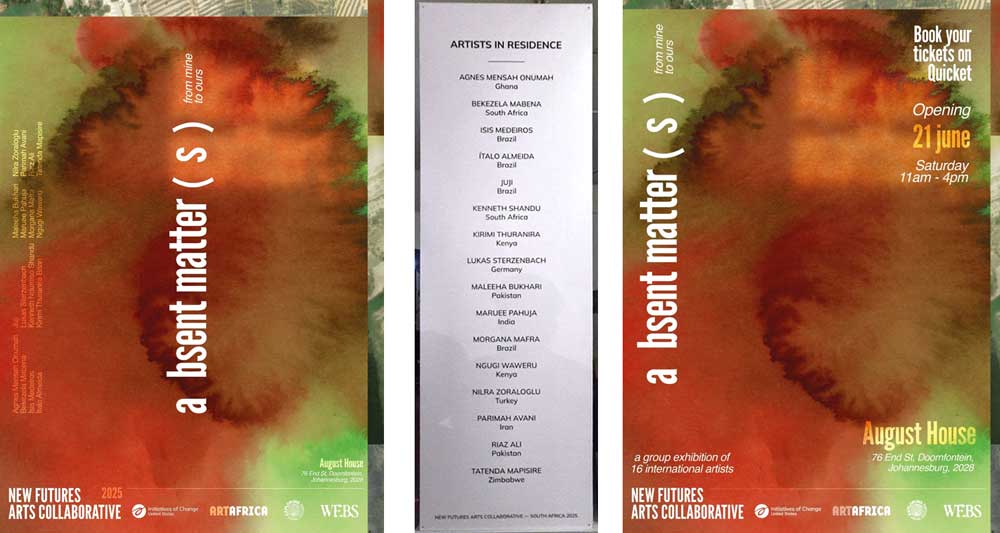absent matter(s) - from mine to ours ... opens with a question that is also a fault line: can we transform what matters by embracing what is absent? A practice that narrative theory describes as “unveiling the absent but implicit”.
In Johannesburg, the earth replies with voids. 278 abandoned mine shafts breathe sulphuric mist into Soweto. Mine dumps tower above the city like negative monuments. Toxic dust permeates lungs and laundry alike. The bodies of workers briefly surface before sinking back into the news cycle. Their dreams negotiated in court as numbers instead of names.
Absence here is not emptiness — it is thick, mineral, and profitable. 420 tonnes of “invisible gold” lie dormant in the city’s ground, wealth uncounted precisely because it is not yet in anyone’s hands. Yet mine shafts extend beyond borders. In Brumadinho, Brazil, 272 bodies were folded into a single rush of tailings; the mud remains in the water table. Absences resonate across continents. An explosion killed dozens of workers in a private Iranian coal mine in South Khorasan. India, Ghana, Kenya, and beyond: voids are corporeal, intergenerational, and geopolitical; what is absent might be what connects us all. The untold stories, the silenced, embedded traces in mundane devices.
This exhibition evokes the value of the absents as shared matters that build our present. We attend to what industrial accounting omits: the slow violence of particulate time, the speculative lives of elements, and the songs of languages shaped in darkness. Absence becomes a common—a shared loss that might teach us other measures of value. The present is geological, and so is the future.
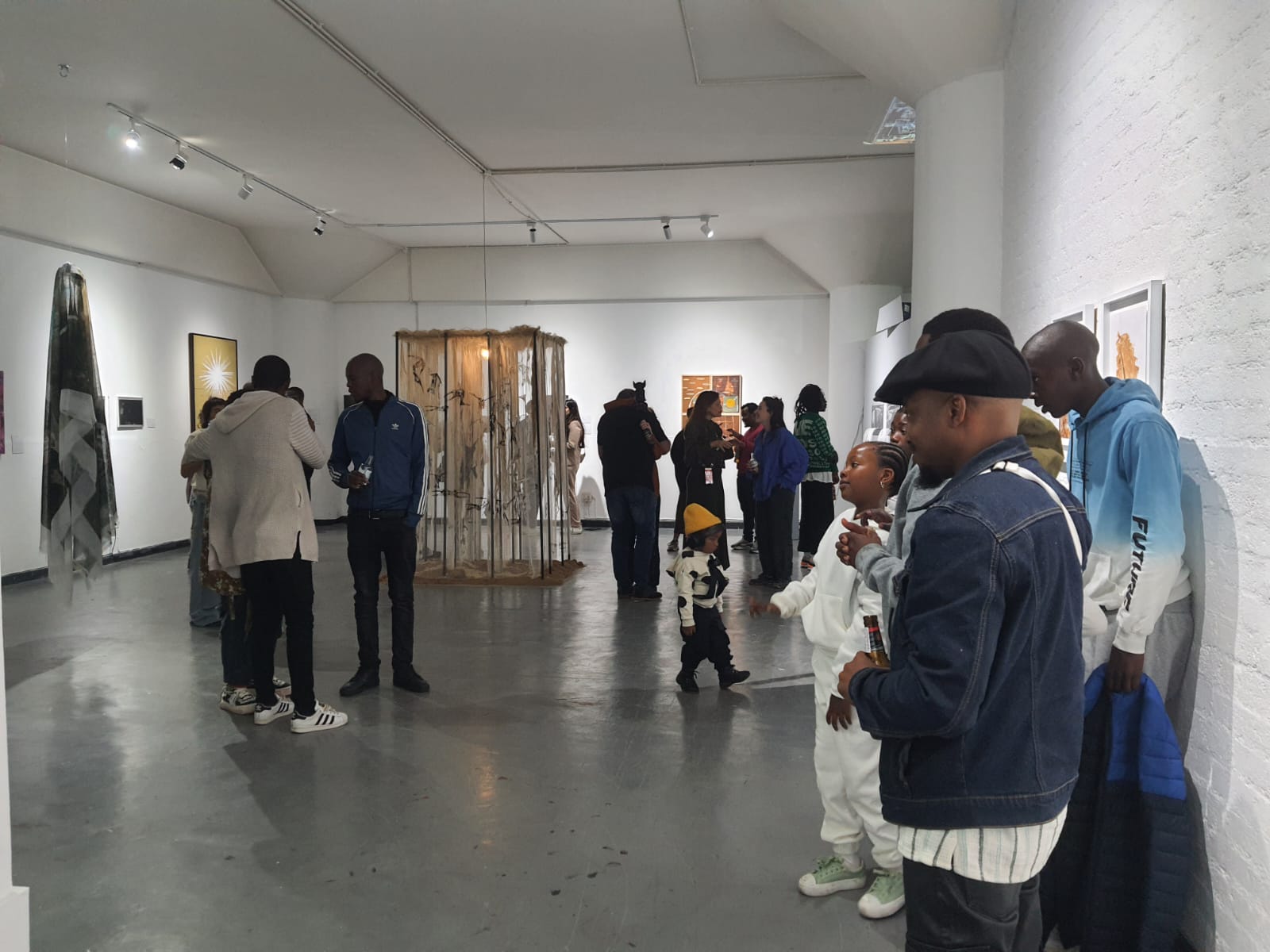
(Photos: Avi Sooful)
Absent Matter(s) is a collective conversation among the works of 16 international artists from 11 countries developed through the New Futures Arts Collaborative residency program. Together, the artists were invited to unearth the narratives that sustain current systems and to uncover alternative imaginaries.
“Transformative change becomes possible only when we shift the deepest stories we tell about ourselves and the world.” (Inayatullah, 2004) Inspired by Sohail Inayatullah’s research on narrative transformation in future studies, the space invites a journey through the multilayered strata of the present. Walking through the depths of our narratives, it unfolds on four levels: from the perceptible surface, passing through systems worldviews—until the myths and metaphors—with seeds of long-term narrative change.
We invite to move through the exhibition as one would navigate a defunct seam: alert to collapses, attuned to echoes, willing to feel the weight of things that are no longer present yet still insist on mattering. This is a journey into the entrails of our sensorial landscapes with the claim for a path towards a new narrative for living horizons, from mine to ours.
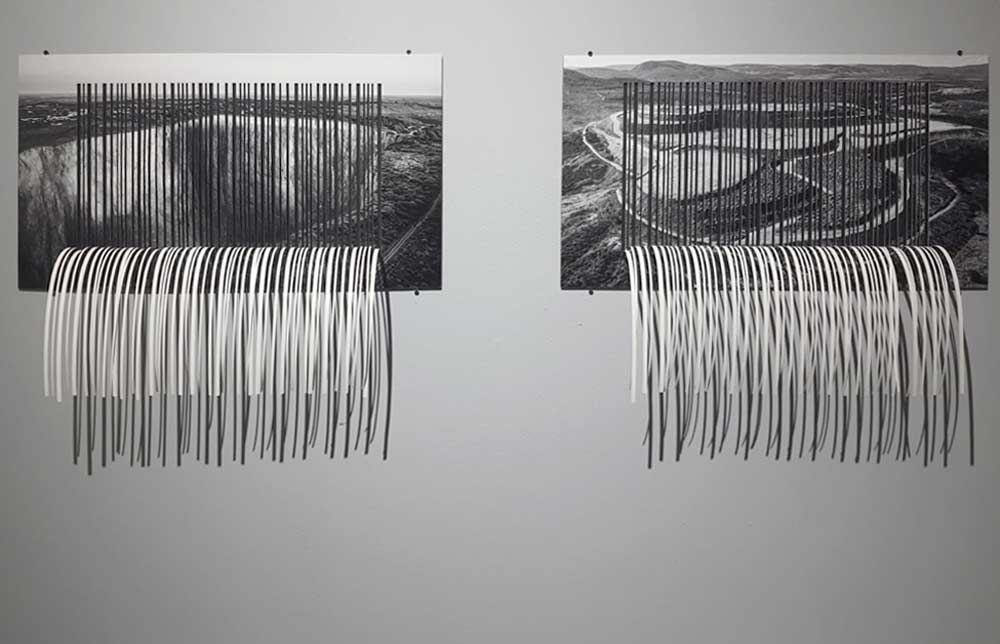
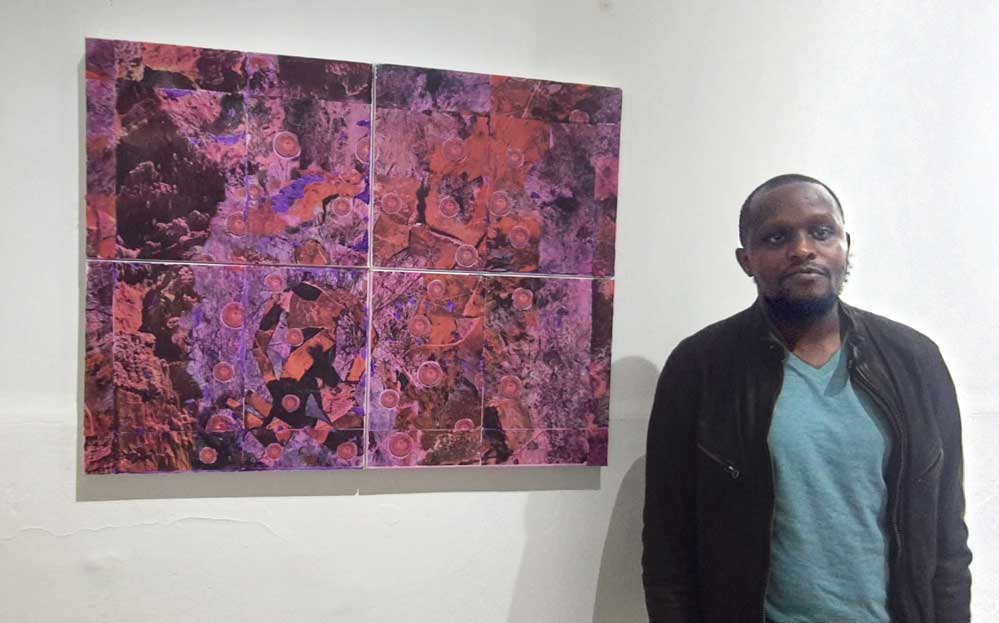
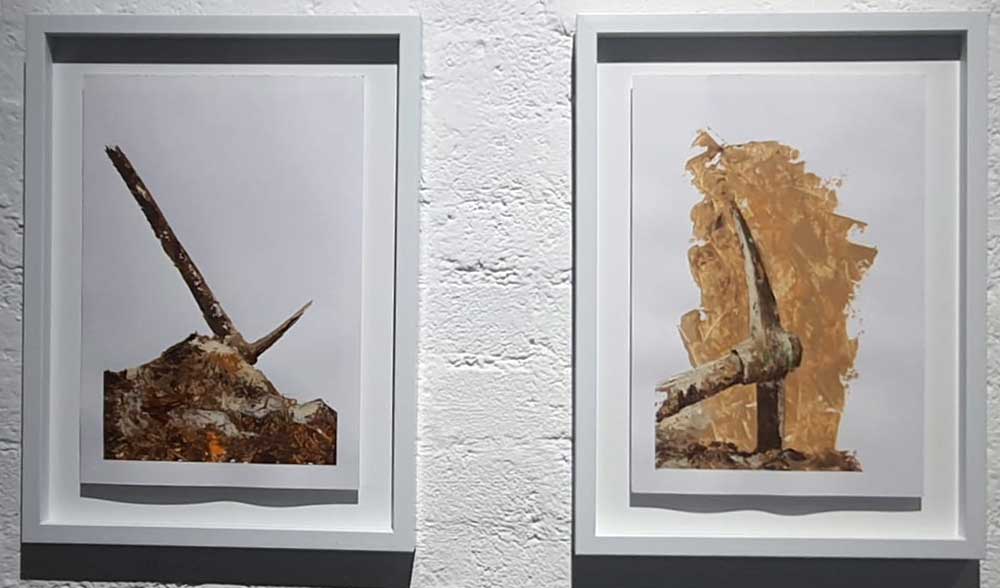
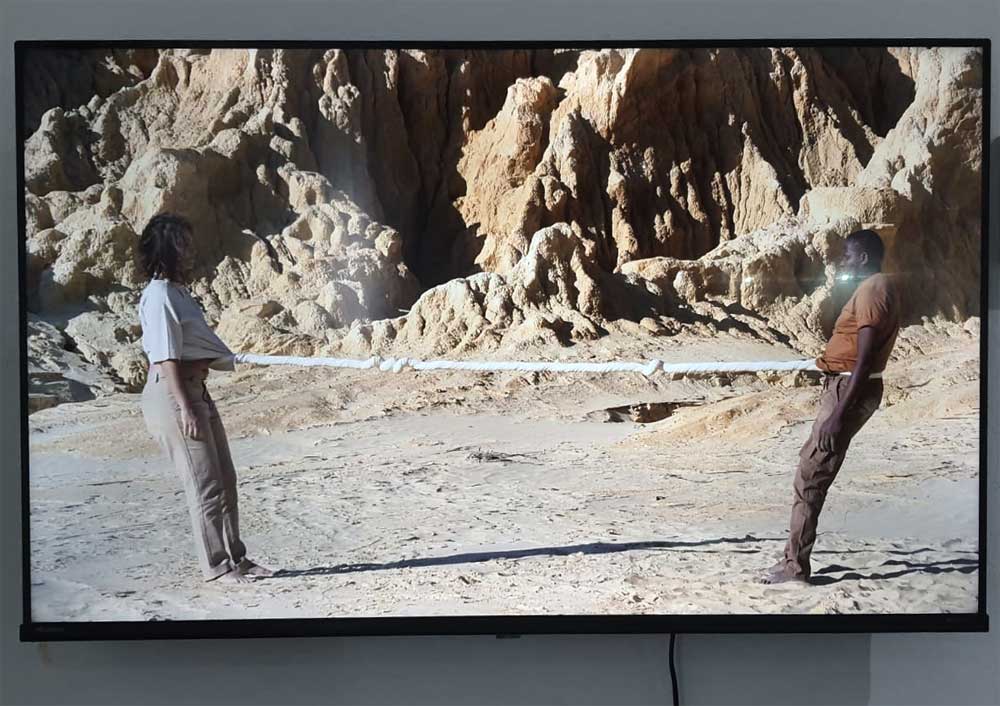


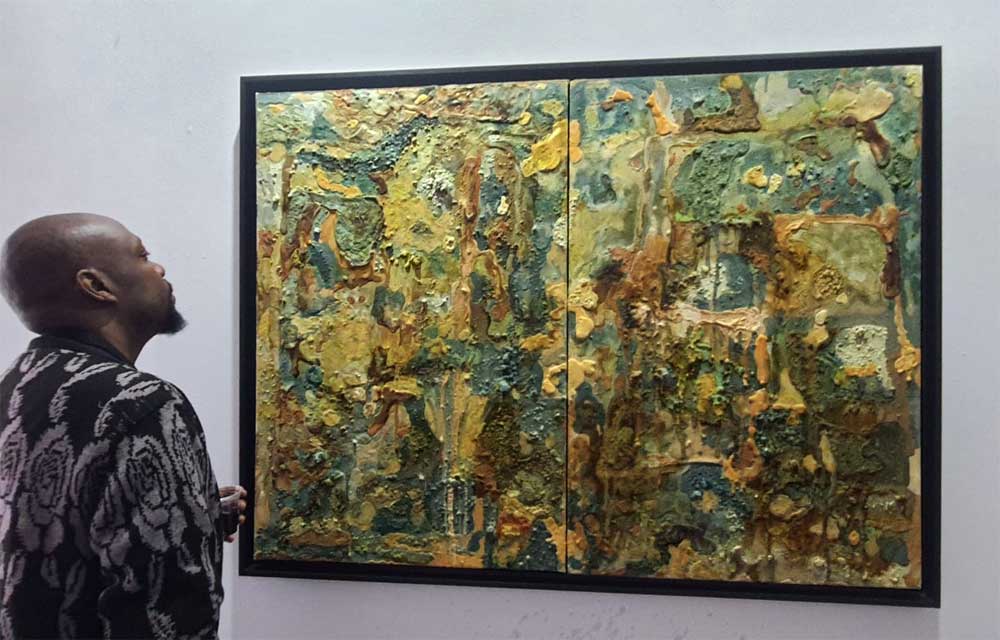
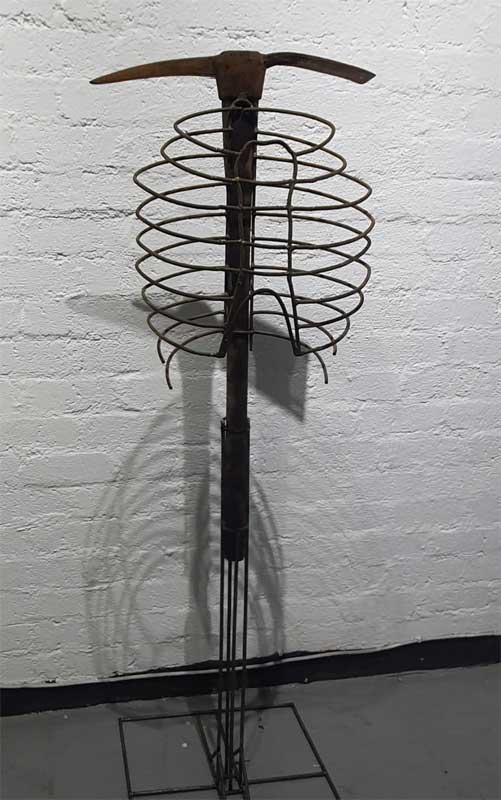
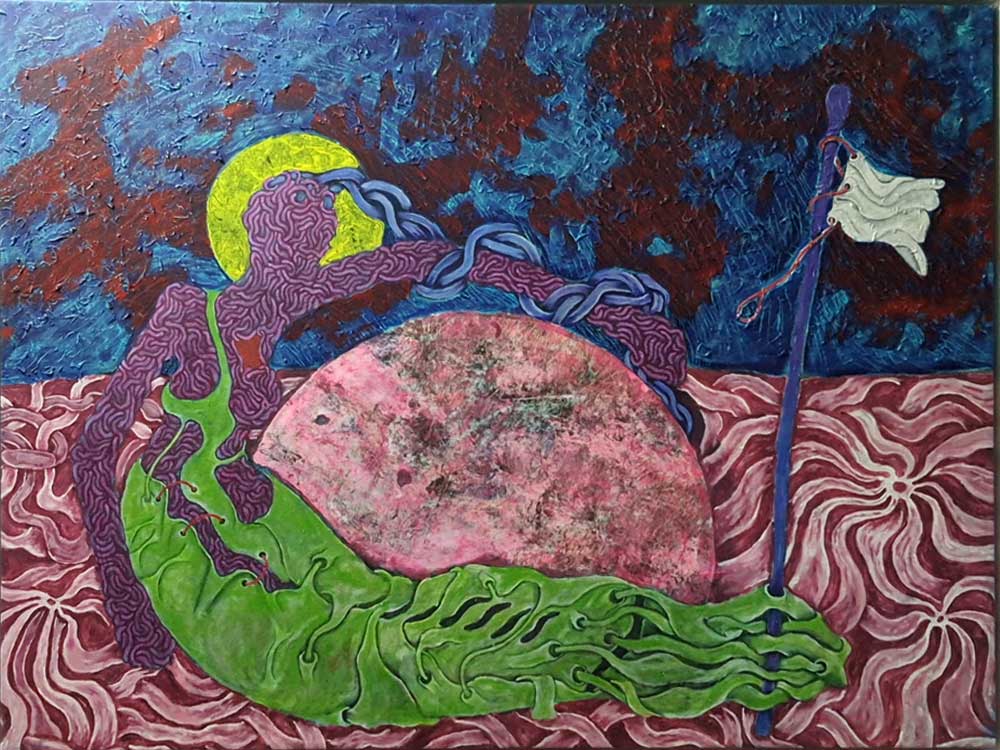
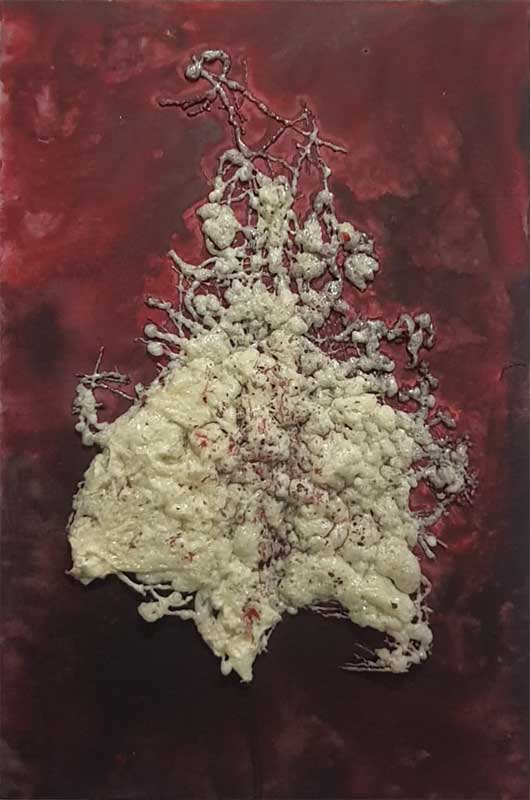
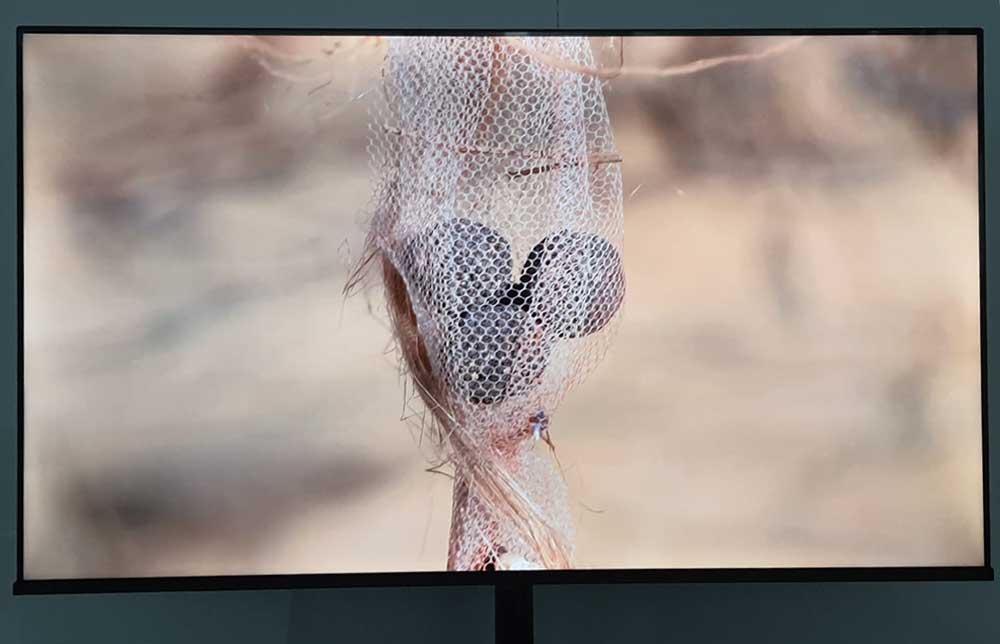
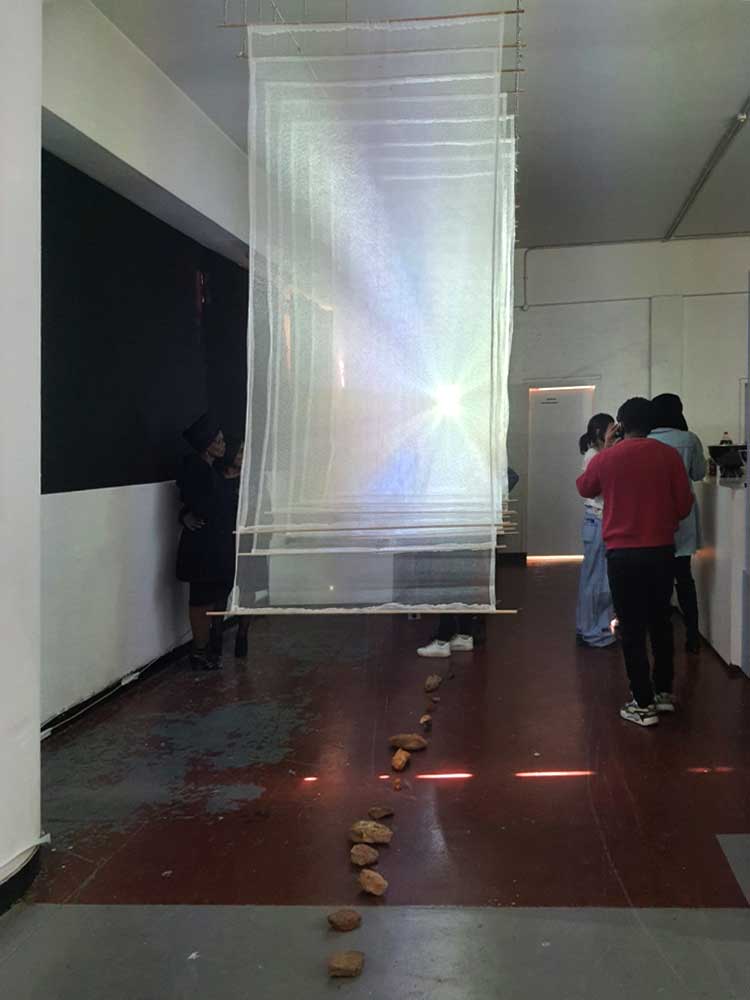


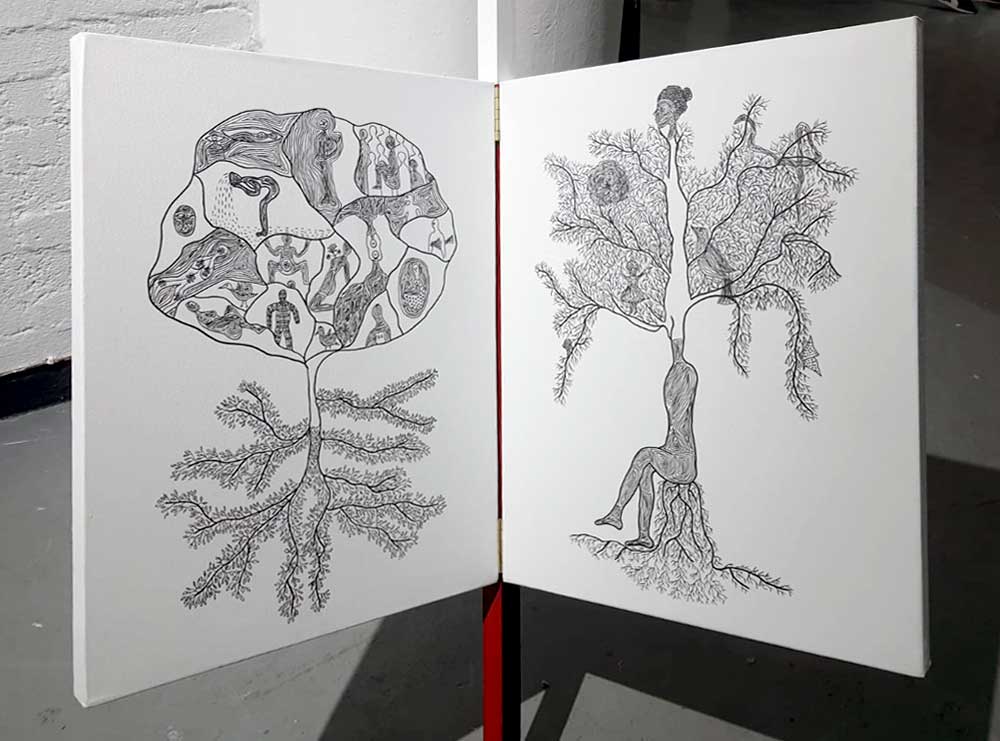

LEVEL 1: SYMPTOMS | SURFACE
In the perceptible surface the symptoms are revealed, where socio-environmental disturbances appear as tangible matters. The senses respond to an ill socio-environmental landscape. What narratives are perceived in and by the body-land?
LEVEL 2: SYSTEMS
The trade, the laws, the rules, the institutional allegories, the borders of our societal bodies. The systematic level uncovers the structures behind the edges of our existences. What are the scaffolds of our socio-political landscapes? What values do they hold?
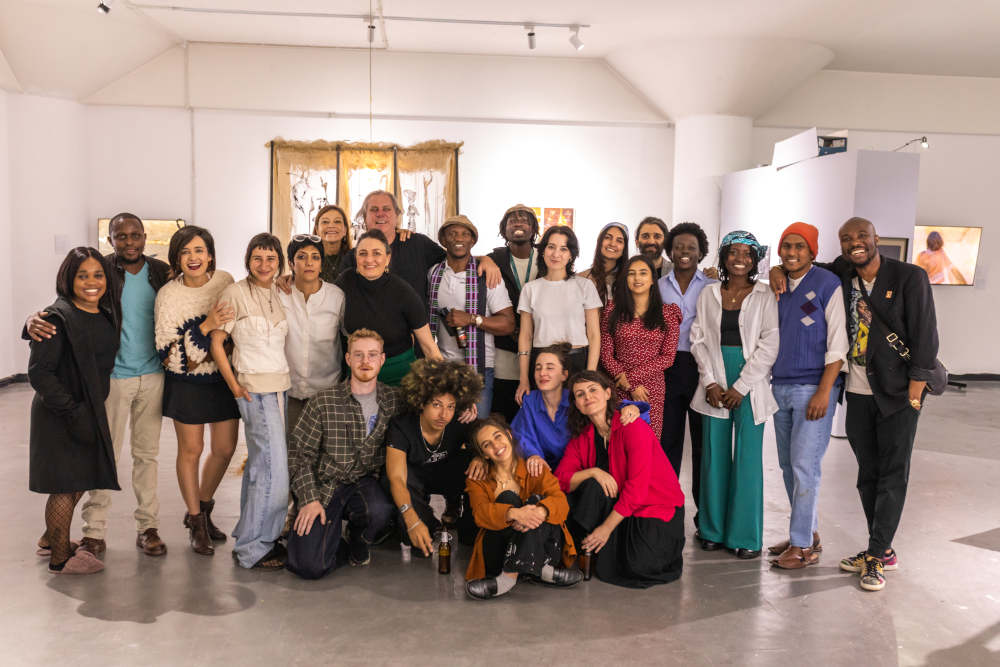
LEVEL 3: WORLDVIEWS
In the depths of our metaphorical and metamorphic landscapes, the worldviews carry the matter of our long term perceptions, the ancestral marks, the hierarchies between worthiness and disposability, beauty and destruction, knowledge and mythology. How are the perceptions of the world shaping the matters of the world?
LEVEL 4: MYTHS AND METAPHORS
In the bottom of our societal geology, the myths and metaphors are proposed here as liminal spaces, where the potential for transition and long-term transformation live. Hidden beneath, in the deep tunnels of our imaginaries. Those enrooted stories that carry the principles of our multilayered meaning-making journey. It is the space for imagining, wondering, uncovering, unlearning, relearning, playing and creating new narratives for new possible futures.
